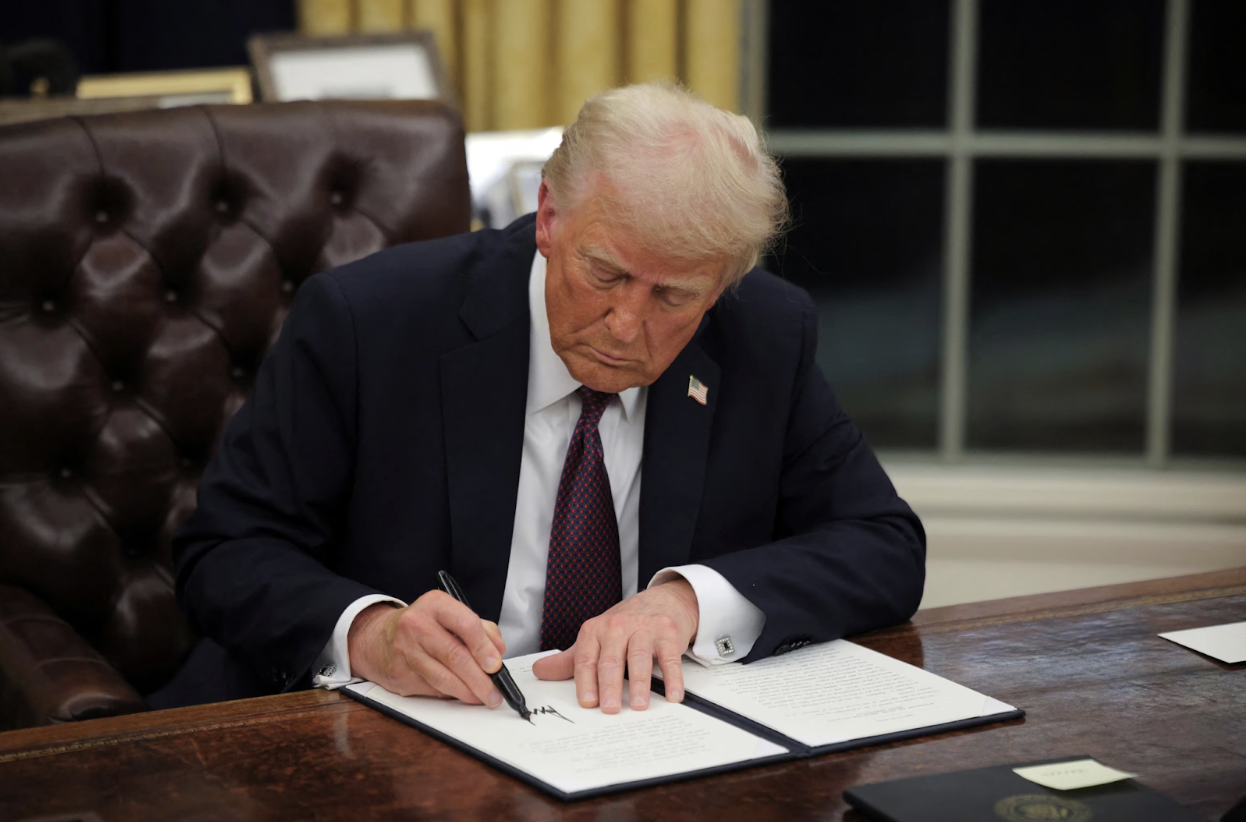Photo via ABC News
***
On Friday September, 19th, President Trump stunned both supporters and critics by announcing a steep new fee on the H-1B visa, a permit that allows U.S. companies to hire high-skilled foreign workers. Since its inception, the fundamental principle of the Make America Great Again (MAGA) movement has been putting the interests of Americans above all others. Instead of relying on other countries for manufacturing, the movement promotes making goods domestically. Instead of funding foreign wars halfway across the world, MAGA promotes cracking down on the violence in our own cities. President Trump’s immigration policy is an extension of the broader American First principle. On the campaign trail, Trump railed against illegal immigration, and once in office, he moved quickly to tighten the border and ramp up deportations. According to the Department of Homeland Security, more than two million illegal immigrants have been removed or self-deported since he took office. His latest move applies a similar hardline approach to the realm of legal immigration. By imposing a $100,000 tax on each H-1B visa, the administration is attempting to discourage firms from hiring foreign labor and incentivize them to hire Americans instead.
Although the H-1B program is numerically small, it plays a significant role in America’s immigration system. Established in 1990, it permits U.S. companies to bring in workers for “‘specialty occupations’ that require at least a bachelor’s degree or the equivalent.” The number of visas issued per year is capped at 65,000 plus an additional 20,000 for “foreign professionals who graduate with a master’s or doctoral degree from a U.S. institution of higher learning.” The H-1B visa is intended for high-skill immigrants, which the US is currently lacking. Recently, the most common users of H-1B visas are tech firms. According to the Department of Labor, 32.4% of certified applicants for Fiscal Year 2024 were software developers.
The main argument coming out of the pro-H-1B visa camp is as follows: If America is going to win the AI race, then it needs all the software developers it can get. Perhaps best represented by Elon Musk, who tweeted in December 2024, “The reason I’m in America along with so many critical people who built SpaceX, Tesla, and hundreds of other companies that made America strong, is because of H1B.” Similarly, Nvidia CEO, Jenson Huang has said, “We want all the brightest minds to come to the United States. Remember immigration is the foundation of the American dream, and we represent the American dream.” Throughout history, America has relied on immigrants such as Albert Einstein, Nikola Tesla, and Elon Musk to lead her technological development. If America wants to emerge from the fourth industrial revolution victorious, then they should follow their playbook from the previous industrial revolutions and continue to import the world’s best and brightest.
The main opponents of the H-1B visa program are the populist right, claiming it results in wage suppression. Steve Bannon, a hardcore immigration restrictionist, former Trump strategist, and a figurehead of the populist right, has stated, “No H-1B visas. Instead of stapling a green card to their diploma, staple an exit visa. You get 30 days to hang out with classmates, do alumni stuff, then leave.” At a time when recent college graduates are facing an unemployment rate above the national average, most significantly 6.1% in computer science, it’s easy to see why Americans wouldn’t want more job competition from foreign workers. Especially when we consider that, according to a 2020 report from the Economic Policy Institute, “Most H-1B workers are paid below-median wages.” How can big tech companies hiring foreign workers to undercut American wages be beneficial to America? If they’re being paid below market wages, are they really the best and brightest?
It’s important to think about wages as the intersection between what firms are willing to pay and what workers are willing to accept. The price laborers are willing to accept is determined by the opportunity cost of what they receive. Foreign workers have a lower-opportunity cost than Native American workers, leading to downward pressure on American wages.
The Austrian economist, Henry Hazlitt, wrote in his famous work, Economics in One Lesson, “The spread-the-work schemes rest also, as we began by pointing out, on the false assumption that there is just a fixed amount of work to be done. There could be no greater fallacy. There is no limit to the amount of work to be done as long as any human need or wish that Spread-the-Work Schemes work could fill remains unsatisfied.” Under Trump, the conservative movement has begun to reject liberal-economic teachings. Instead of asking the question “who’s taking my job,” Republicans should start asking the question “what’s preventing me from getting a new, better job?”
***
This article was edited by James Dougherty and Esme Carson.
